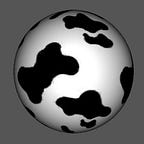The Tricky Nature of Newton’s 3rd Law
“Every action has an equal and opposite reaction.” is slighlty misleading.
History of the 3rd Law
From its first exposure to the world in 1687 via Newton’s Philosophiæ Naturalis Principia Mathematica as
“Lex III: Actioni contrariam semper et qualem esse reactionem: sive corporum duorum actiones in se mutuo semper esse quales et in partes contrarias dirigi.”
(Latin for “All forces occur in pairs, and these two forces are equal in magnitude and opposite in direction.”) Source: Physics University of Toronto
to its modern ubiquity that even people with little physics background can recite:
“Every action has an equal and opposite reaction.”
Common Misconception
However, the phrasing might have confused many (it definitely did to me in the novice period of my physics quest).
If every force produced an equal and opposite force, would they not cancel and the net force be zero?
How could anything move?
The more complete, but slightly tongue-twisting, version resolves our dilemma.
“If a body A exerts a force on body B, then body B exerts a force equal in magnitude and opposite in direction of body A.”
The key difference between balanced forces and action-reaction forces is:
The action and reaction forces act on different objects.
whereas balanced forces act on the same object and thus cancel.
It’s Newton’s world and we are all living in it
This may seem like a silly question at first but,
How exactly do we jump?
Where is the force to overcome weight coming from?
We are going to have to lower our high and mighty chins, literally, and look to the ground.
When jumping, what we are really doing is pushing against the ground. By Newton’s 3rd Law, the ground is pushing back on us.
If we push with a force greater than our weight, the ground will push back just as hard. There is net upwards force on us and we accelerate up into the air!
Aside from explaining everyday actions like jumping, swimming and even walking (can you explain how?), Newton’s 3rd Law is responsible for launching humanity not just into the atmosphere but also into space.
To the stars!
Rockets work by burning fuel, usually a mixture of liquid hydrogen (H₂) and oxygen (O₂).
This combustion reaction generates huge amounts of heat, which causes the water vapor (H₂O) produced in the reaction to expand and be ejected out of the nozzle at very high speeds (up to 10 000 miles per hour!).
The rocket is pushing downwards on the steam to eject it out of the nozzle. Newton’s 3rd Law tells us that the steam must also be pushing upwards on the rocket with an equal-magnitude force.
If you would like to see regular physics and maths content, you have come to the right page! A clap and follow are much appreciated!
You can also support me directly by buying me a coffee ☕.
